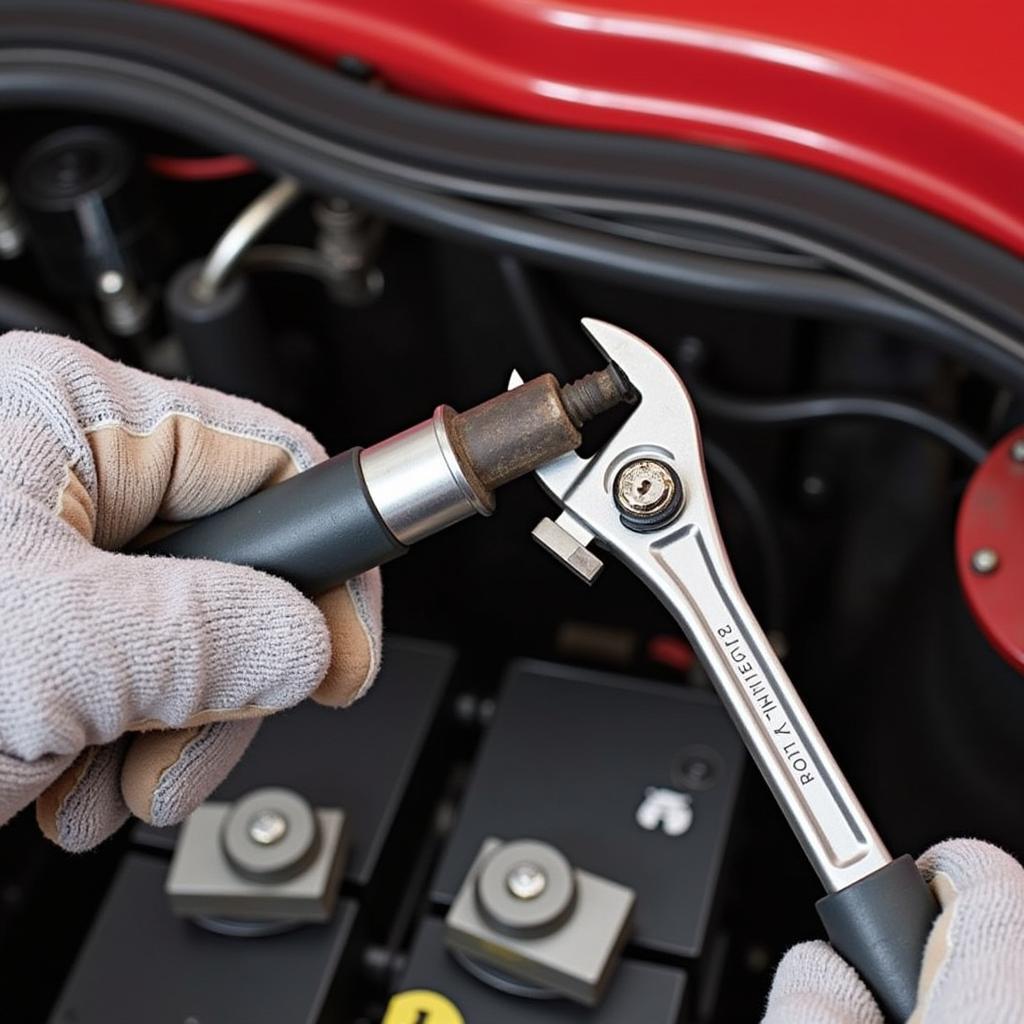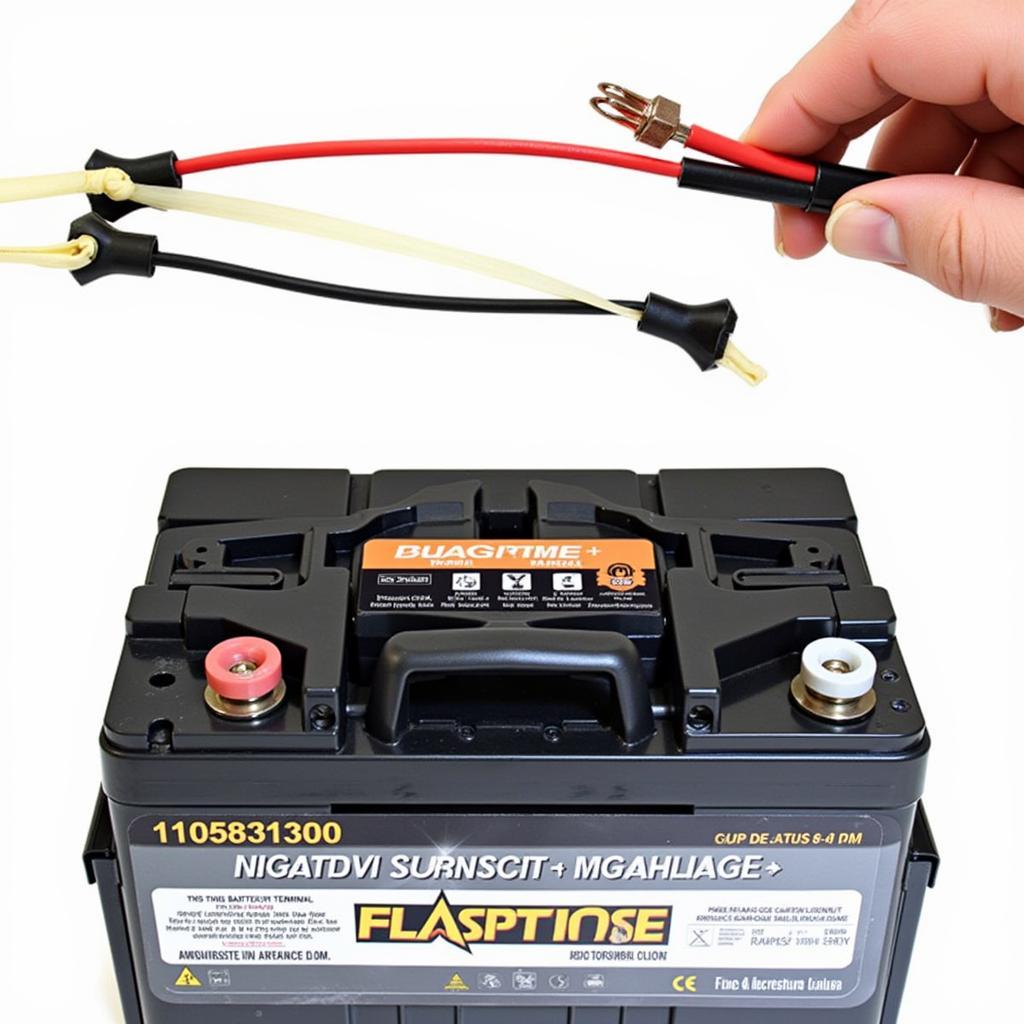Disconnecting a car battery is a fundamental procedure every car owner should know. Whether you’re performing maintenance, replacing the battery, or working on electrical systems, using the right Tools To Disconnect Car Battery terminals is crucial for safety and preventing damage. This guide will explore the essential tools, safety precautions, and step-by-step instructions for disconnecting your car battery effectively.
Why Disconnect Your Car Battery?
There are several reasons why you might need to disconnect your car battery. These include preventing electrical shocks while working on the car’s electrical system, troubleshooting electrical problems, preventing battery drain if the car is stored for an extended period, and of course, when replacing a dead battery. Knowing how to perform this task correctly, including selecting the appropriate tools to disconnect car battery terminals, can save you time and potential headaches.
Want to know which tools are essential for this job? See our guide on tools for disconnecting car battery.
Essential Tools to Disconnect a Car Battery
While you might be tempted to disconnect car battery without tools, using the correct equipment is paramount for safety and efficiency. Here are the most commonly used and recommended tools:
- Battery Terminal Wrench: This specialized wrench is designed to grip the battery terminals securely, providing the leverage needed to loosen them without damaging the battery posts or the surrounding components.
- Combination Wrench Set: A standard set of combination wrenches can also be used if a battery terminal wrench isn’t available. The correct size will depend on your car’s specific battery terminals.
- Gloves: Wearing insulated gloves is crucial for protecting your hands from potential electrical shocks and corrosive battery acid.
- Safety Glasses: Eye protection is essential to prevent any debris or battery acid from splashing into your eyes.
- Battery Terminal Cleaner: Corrosion can build up on battery terminals, hindering conductivity. A battery terminal cleaner helps remove this buildup, ensuring a clean connection.
 Battery terminal wrench and gloves for safe car battery disconnection
Battery terminal wrench and gloves for safe car battery disconnection
Step-by-Step Guide to Disconnecting Your Car Battery
Disconnecting your car battery is a straightforward process when done correctly. Always prioritize safety and follow these steps meticulously:
- Park and Secure: Park your car on a level surface, engage the parking brake, and turn off the ignition.
- Gather Your Tools: Have all the necessary tools to disconnect car battery terminals readily available within reach.
- Identify the Terminals: Locate the positive (+) and negative (-) terminals on your battery. The positive terminal is usually marked with a “+” symbol or red cover, while the negative terminal is marked with a “-” symbol or black cover.
- Loosen the Negative Terminal: Using the appropriate wrench, loosen the nut on the negative terminal and carefully remove the cable.
- Loosen the Positive Terminal: Repeat the same process for the positive terminal.
- Secure the Cables: Once disconnected, secure the cables away from the battery terminals to prevent accidental reconnection.
If you’re looking for information on disconnecting your car battery without specific tools, check out our article on disconnect car battery without tools.
Common Mistakes to Avoid
When disconnecting a car battery, avoiding these common mistakes can prevent damage and ensure a smooth process:
- Touching Both Terminals Simultaneously: Never allow the positive and negative cables or tools to touch each other, as this can cause a short circuit.
- Forcing the Terminals: If the terminals are difficult to loosen, don’t force them. Use a penetrating oil to loosen the corrosion and try again.
- Incorrect Terminal Order: Always disconnect the negative terminal first and reconnect it last to minimize the risk of short circuits.
Want a deeper dive into the necessary tools? Visit our detailed page on what tools do you need to disconnect a car battery.
 Securing disconnected battery cables away from terminals to prevent shorts
Securing disconnected battery cables away from terminals to prevent shorts
Conclusion
Disconnecting a car battery is a relatively simple task, but using the right tools to disconnect car battery terminals and following the correct procedure is crucial for safety and efficiency. By understanding the steps and precautions outlined in this guide, you can confidently handle this essential car maintenance task. Remember to always prioritize safety and invest in quality tools for the best results.
FAQs
- What happens if I disconnect the positive terminal first? Disconnecting the positive terminal first increases the risk of short circuits if your wrench accidentally touches any metal part of the car’s chassis.
- Can I use pliers to disconnect the battery? While pliers might work in a pinch, it’s not recommended. They can damage the battery terminals and increase the risk of slippage.
- How often should I clean my battery terminals? Cleaning your battery terminals every few months or whenever you notice corrosion is recommended.
Need to know how to disconnect a battery without tools? Here’s a guide on how to disconnect a car battery without tools. If you are interested in car radio decoder tools, you can visit our page best car radio decoder tools.
For further assistance, please contact us via WhatsApp: +1(641)206-8880, Email: cardiagtechworkshop@gmail.com or visit us at 910 Cedar Lane, Chicago, IL 60605, USA. We have a 24/7 customer service team.

Leave a Reply